Your Cart is Empty

March 28, 2023 4 min read
Vitamin supplements have been part of our daily routines for decades and many of us take them as rule of thumb for better health, whether or not we actually feel they’re making a difference or knowing how effective they actually are. Sometimes, the absence of illness is enough to keep us taking a vitamin that is minimally effective at delivering the nutrients it’s meant to.
Advances in technology are changing the vitamin game and how nutrients are delivered to the cells that need it most. One of the most significant advances has been the incorporation of the liposome as a delivery mechanism.
About 50 years ago, a British hematologist Dr. Alec Bangham introduced a study on liposomes. His initiative triggered many discussions regarding the form of vitamins, given that the unique makeup of liposomes grants a highly efficient absorption of nutrients.
The shape of the liposome resembles a cell surrounded by a protective layer, the constituents of which are quite similar to the actual elements of a cell membrane. These microscopic bubbles carry sealed nutrients – vitamins, in this case.
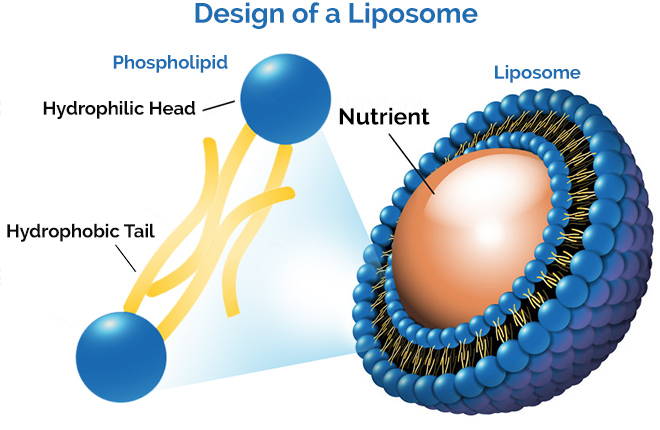
Liposomes, containing a nutrient, have a highly protective double-layered membrane consisting of phospholipids, which play an important role in the preservation of the nutrient, and resemble the phospholipids found in the membranes of cells. The membrane they form is of crucial importance when it comes to liposomal delivery because phospholipids are water-insoluble, and therefore able to deliver the nutrient straight into the bloodstream and then to the targeted cells, avoiding leaking of the valuable nutrient. This is different from regular vitamin capsules or tablets which are taken digestively.
Phospholipids are molecules consisting of a head and a tail which each behave quite differently. The head of this molecule is hydrophilic, meaning that it interacts well with water. By contrast, the tail is the hydrophobic, fatty, and behaves the opposite of the head. When in touch with water, the heads of the phospholipids are drawn to it, forming a layer against the water. Contrary to the heads, the tails turn the other way, avoiding the water. Since liposomes contain a bilayer of phospholipids, there is yet another “row” of phospholipid heads facing the center (gravitating towards the water inside the liposomes), while the tails of both layers meet. This kind of structure results in a liposome.
Besides acting as a shield around the liposomes, phospholipids in the membranes have yet another distinguished role when it comes to the reparation of the cell walls in the body. In fact, our body requires these molecules in order to mend any cells attacked by trans-fats or other damaging substances, and form new membranes.
Take our quiz and find which supplements your body is craving.

The material which constitutes liposomes is recognized by the human body since it is identical to the elements which make up most of the cells. Another advantage of liposomal delivery is due to their very small size. These microscopic bubbles successfully avoid digestive elements, transferring the nutrient from the digestive tract into the bloodstream, and then to the targeted area, achieving bio-availability. In other words, the body is able to use the nutrient more readily through bloodstream delivery.
Liposomal vitamins are taken similarly to traditional vitamins or supplements. The routine that most people are used to entails taking a supplement orally, whether it be a pill, a capsule, or a tablet, which is no different when it comes to the liposomal products. However, with traditional vitamins the digestive system acts by dissolving the supplement to free the nutrient, destroying a part of it in the process, and leaving only a small portion of the bioavailable nutrient, as many studies on traditional vitamins indicate.
In addition, traditional supplements need time to break up the nutrient, and energy is wasted in the process. Oral consummation is considered the most convenient method, but contrary to conventional vitamins, liposomal vitamins need not be digested, meaning that a substantial amount of the vitamin is preserved. Consequently, liposomal delivery offers the highest bioavailability rate, which results in significantly higher absorption than traditional vitamins. In the case of our Premium Liposomal Vitamin C, for example, absorption is up to 5x that of traditional Vitamin C. When it comes to the actual delivery rates in percentages, certain studies show that only 10-20% of the traditionally delivered vitamin is available after being broken down and digested. On the other hand, up to 90% of the nutrient reaches the bloodstream via liposomal delivery.
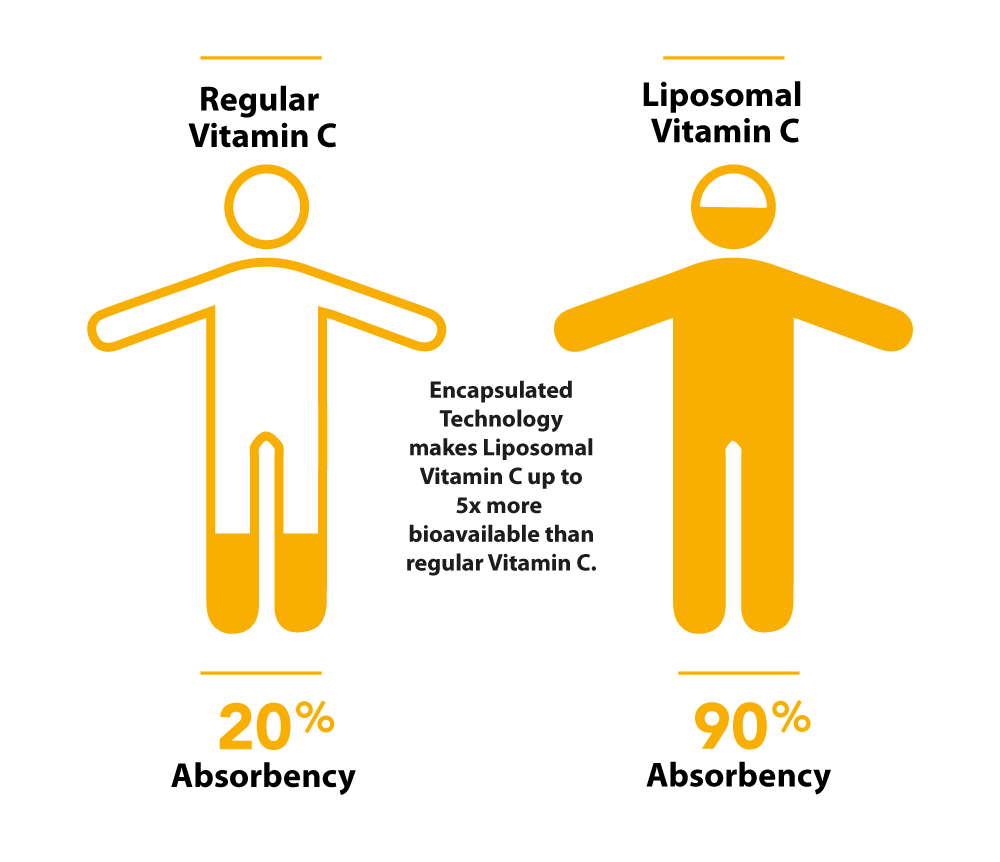
Liposomal vitamins have also proven to be a favorable alternative over traditional vitamin supplements due to the absence of side effects, especially when it comes to stomach and gastric discomfort. It is no secret that traditional oral supplements can cause these kinds of side effects, especially if taken on a daily basis. Buffered vitamins usually contain minerals which balance the acidity of the vitamin causing stomach issues. However, the minerals found in these buffered vitamins could be the reason behind even bigger issues since they’re not meant to be consumed on the daily basis. By contrast, liposomal vitamins contain a gastrointestinal protective layer which prevents any gastric discomfort even when you take them at higher quantities day after day.
Due to the high absorption and avoidance of leakage of the nutrient in supplements such as highly-bioavailable Premium Liposomal Vitamin C, liposomal delivery grants a bigger dosage of the actual vitamin. Needless to say, the health benefits of a straightforward delivery method such as this one are numerous. In addition, this method could also be considered cost-effective, given that a single pill or a capsule releases such a high dose of the vitamin.
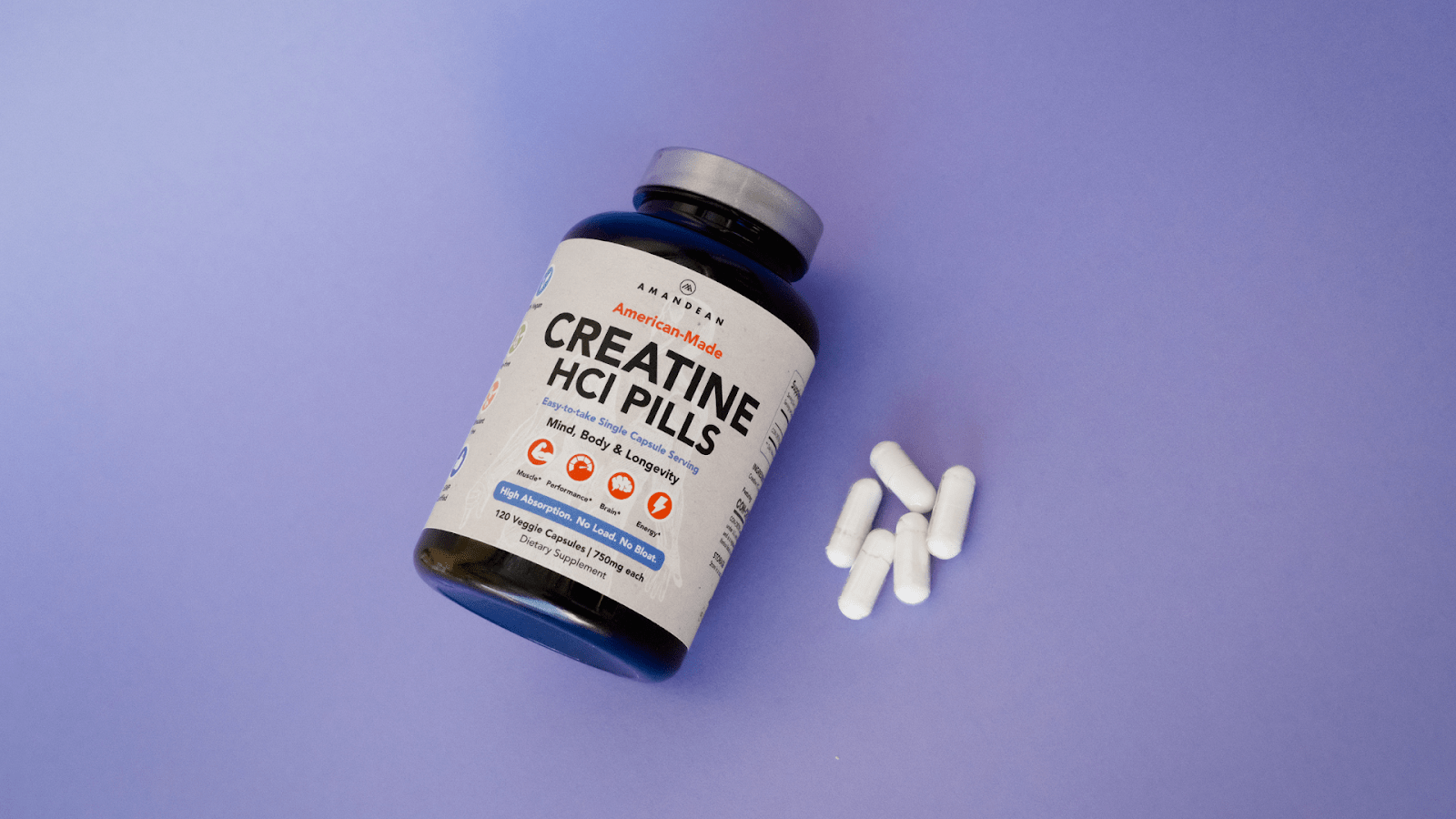
October 17, 2025 8 min read
Find out why creatine is better for vegans! Boost your wellness game and unlock peak performance with Amandean's premium supplements today.
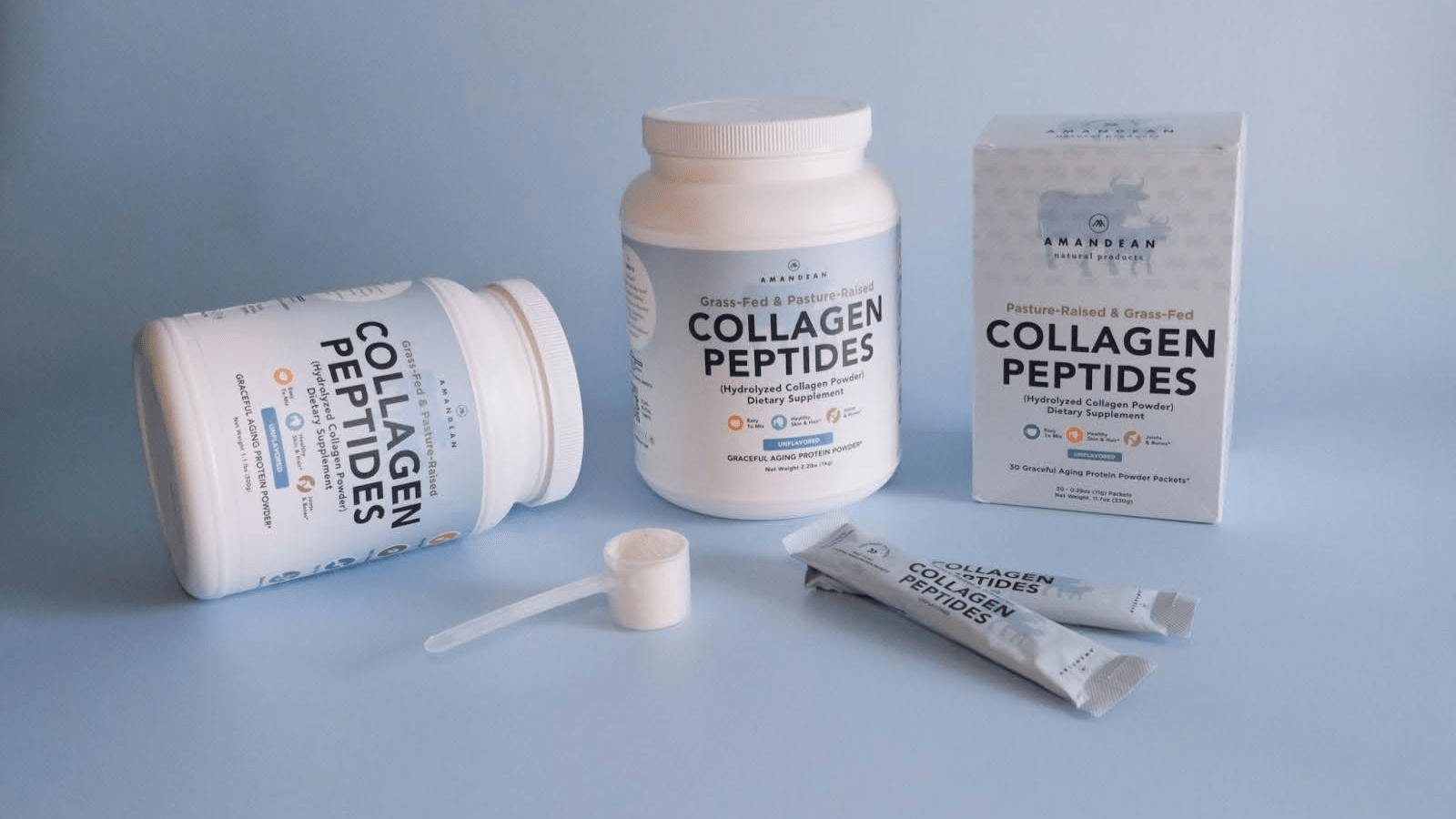
October 16, 2025 7 min read
Learn whether collagen in coffee is just another wellness fad. Examine the facts, benefits, and how to use collagen in coffee for beauty and joint support.
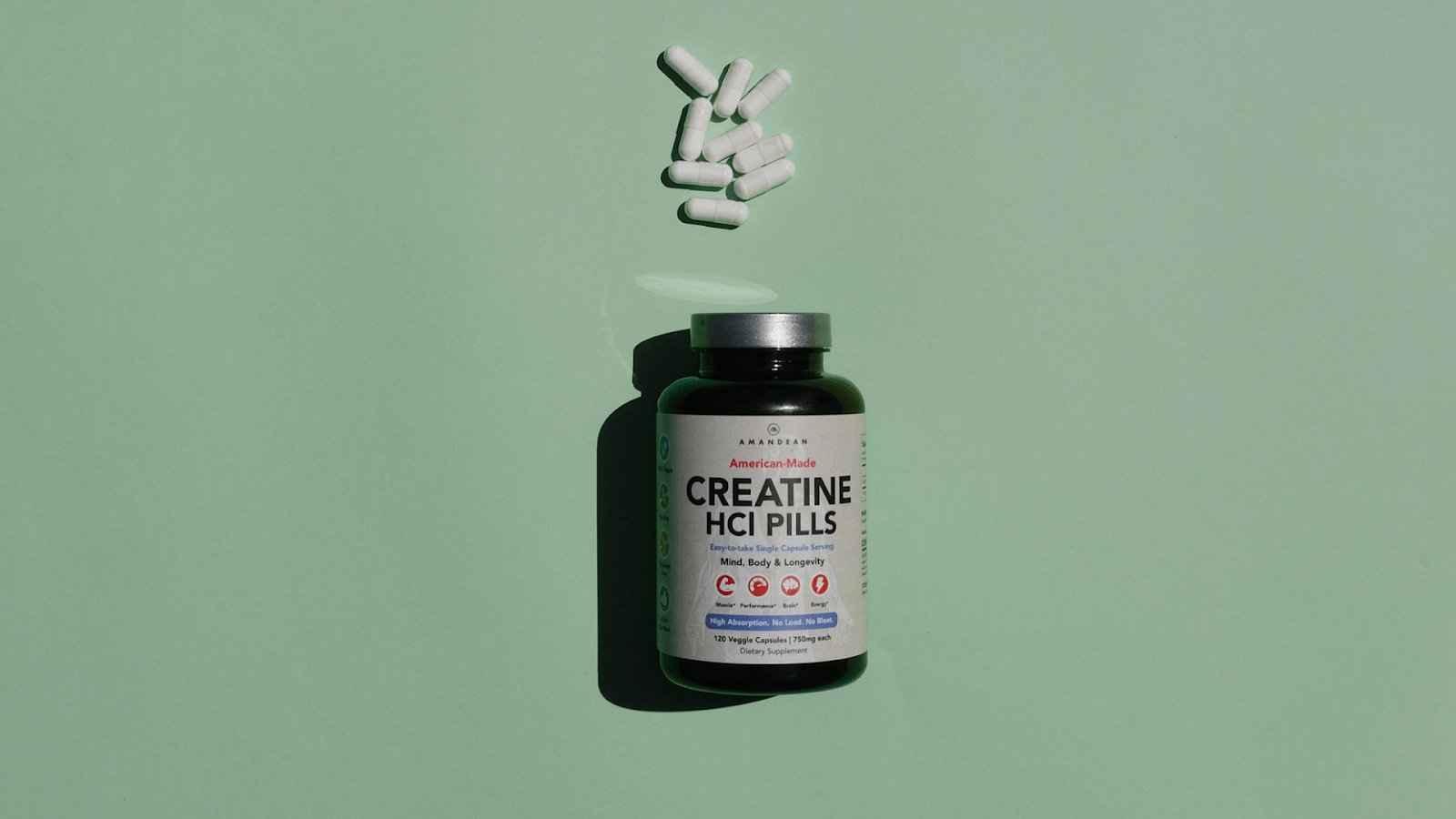
September 22, 2025 9 min read
Unlock the full benefits of creatine for women. Boost energy, beauty, and brainpower with Amandean’s clean formulas.